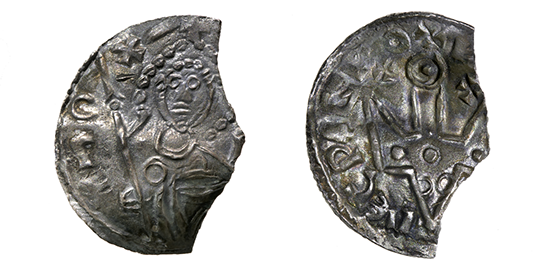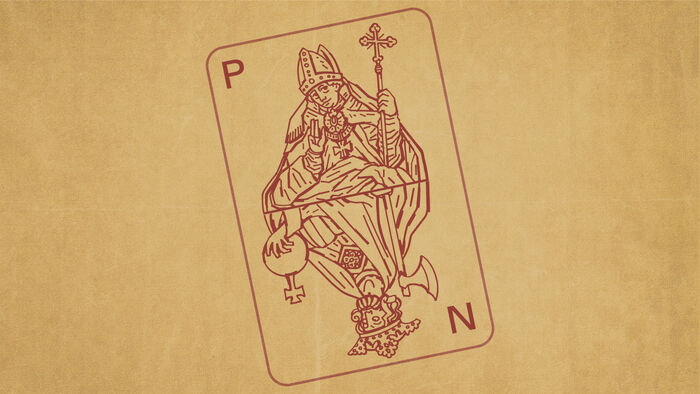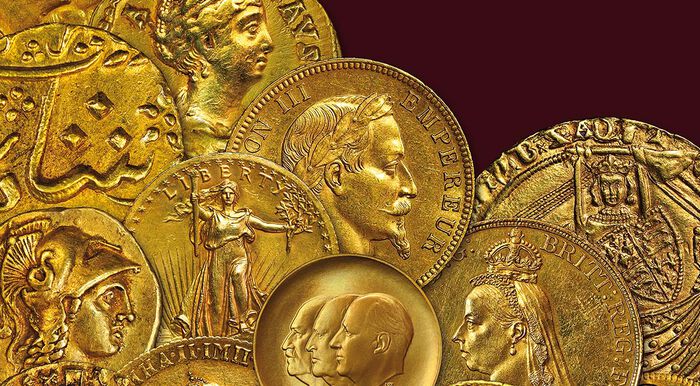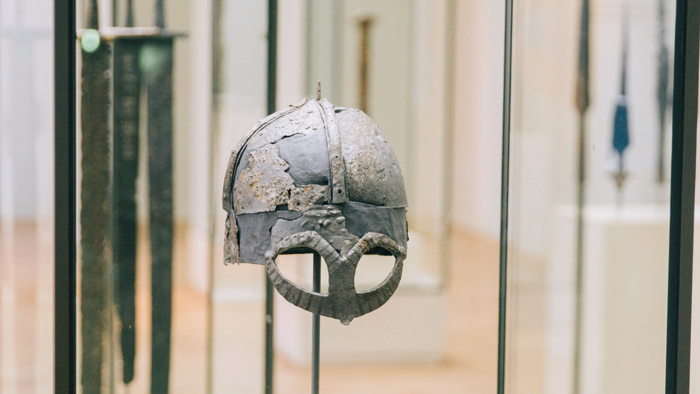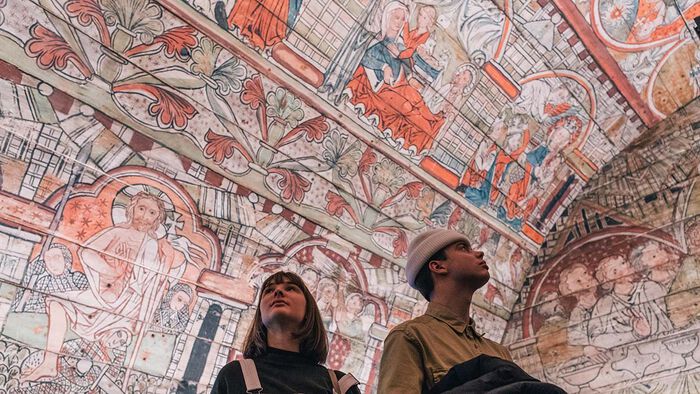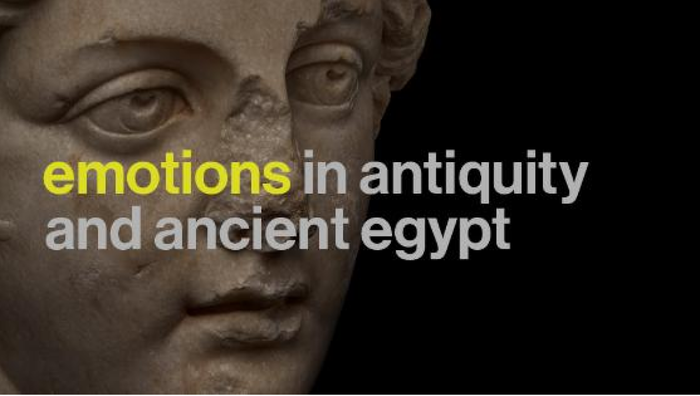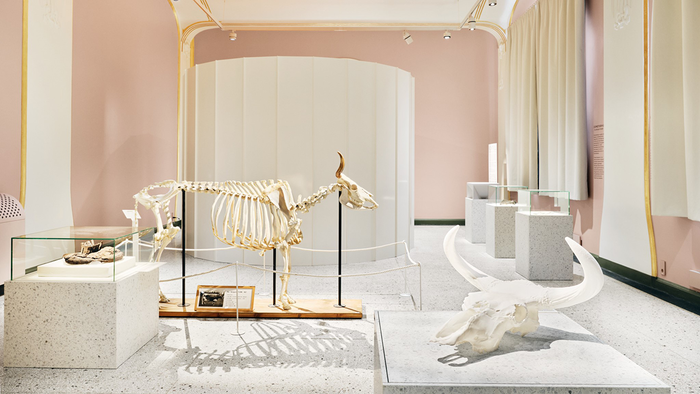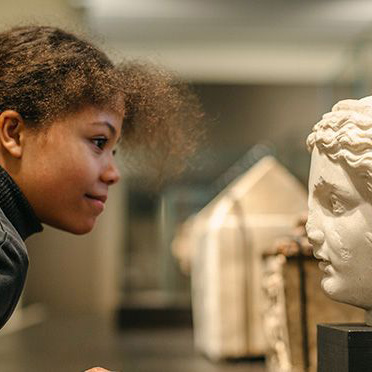Two thirds of the coin is preserved. The coin is very rare, also from a Russian and Ukrainian perspective. It was found in a treasure trove from the Nesbøen farm in Møre and Romsdal, which was buried in the ground sometime after approximately 1023 CE. A total of 778 coins were found, making it one of Norway's largest coin hoards from the Viking Age.
At Nesbø with Grand Prince Yaroslav, King Olav and Other Great Men
The same hoard as Yaroslav the Wise's coin contains a coin issued in the name of Olav Haraldsson, later Olav the Holy. This coin fragment of 0.3 grams is one of four coins minted in King Olav's name and found in Norway.
Yaroslav and Olav meet here in a treasure trove on the Nesbø farm in north-western Norway, together with coins minted by the German-Roman emperors Otto I, Otto II and Otto III, Anglo-Saxon kings Ethelred II and Knut the Mighty, and the Swedish king Oluf Skötkonung. In many ways, we can say that the Nesbø hoard includes a virtual gathering of the most powerful men of the time.
The fact that most of the coins from contemporary rulers are contained in this treasure trove is evidence of extensive trade and communication networks at the beginning of the last millennium 1000 years ago.
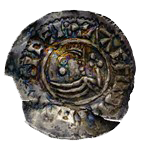
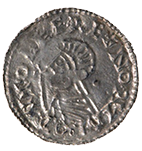
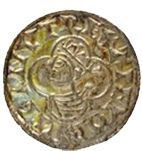
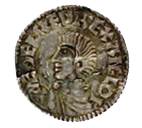
These four silver coins depict the heads of European kings, emperors and princes from the Nesbø treasure trove: Oluf Skötkonung (King of Sweden around 995-1022), Knut the Great (English King 1016-1035, Danish King 1018-1035 and Norwegian King 1028-1035), Olav Haraldsson (Norwegian king 1015-1028, 1030) and Ethelred the Unready (English king 978-1016).
Testing the Grand Prince's Coin
The front of the coin (obverse) bears evidence of a Viking who tested the quality. This concerned the content of silver, i.e. how pure the silver was. On the left side of the ruler’s portrait, between the head and the sceptre, we can see a small incision in the surface of the coin. This is a so-called test mark or ‘pecks’ as we call it in English.
The practice of testing the silver quality of the coins was widespread among the Vikings. As many as one million coins from the Viking world have been found and quite a few of these have been subjected to such testing. This practice did not exist outside the Viking community. Therefore, we know that such test marks mean that the coin circulated among Vikings.
The practice of testing the quality of the silver is discussed in legal texts and saga texts from Iceland.
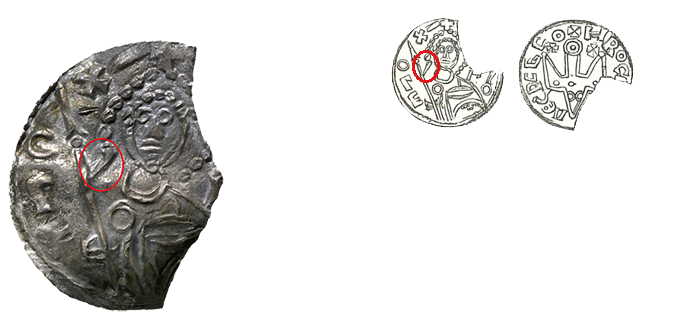
Norwegian Kings and Mercenaries
Austerveg was the name of the route the Vikings used to travel eastwards. There they founded cities such as Novgorod and Kyiv along the Dnieper River, which meanders through large parts of Russia, Belarus and Ukraine and flows into the Black Sea. The Dnieper (Ukrainian Dnipro) is Europe's fourth longest river.
In the Viking Age, there was close contact between Scandinavia and the Kyiv Empire, or Kyiv-Rus as it was called. Norwegians and Scandinavians travelled there in significant numbers, many to serve as soldiers in the service of Byzantine emperors. Four Norwegian saga kings stayed in Kyiv for extended periods, including Olav Haraldsson and Harald Hardrada.
Harald Sigurdsson (later King Harald Hardrada) travelled to Austerveg after the battle of Stiklestad on 29 July 1030. Harald fought on the losing side and fled with a group of relatives to the east. After a stay with Yaroslav the Wise in Kyiv, Harald continued on to Constantinople, where he and his men entered the service of the Byzantine emperors. Harald became both a general and a leader of the emperor's bodyguard. He is the only Scandinavian mentioned in contemporary Byzantine sources.
When Harald Sigurdsson returned home after fifteen years of service, the sagas tell us that he brought with him greater riches than anyone had ever seen so far north.
During the Viking Age, about 800 to 1050, many Scandinavians travelled south-east to serve as mercenaries in Byzantium.
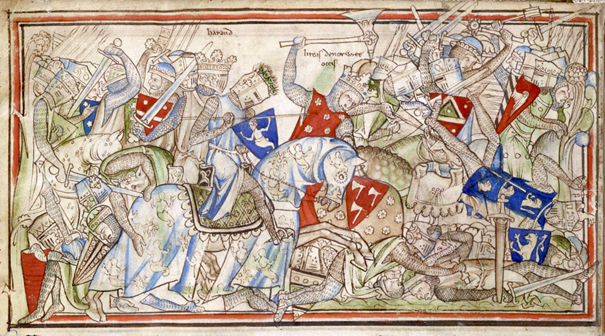
Dove of the Holy Ghost
The reverse of the coin shows a bird with outstretched wings, the dove of the Holy Spirit. The reverse is modelled on either Anglo-Saxon coins issued approx. 1009, or Scandinavian imitations of this Anglo-Saxon coin, probably minted in Lund in Sweden.
The dove of the Holy Ghost was a widely used Christian motif on coins in the 11th century.
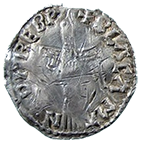
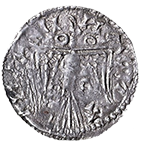
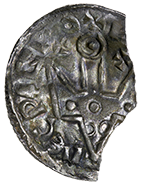
The pictures above show the dove of the Holy Ghost depicted on the coin minted for King Ethelred the Unready in the year 1009, King Olav Haraldsson in the years 1017-1023, and Grand Prince Yaroslav the Wise of Kyiv until about 1023.
